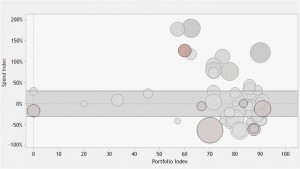Product Line Engineering: Rethinking Product Development
BigLever Software, a provider of product line engineering software, announced today that the company has partnered with Aras Corp. to deliver an integration between product line engineering (PLE) and product lifecycle management (PLM) software suites.
The integration enables product designers to define product options and variants in BigLever’s Gears software and communicate them directly to Aras Innovator PLM tool to generate a complete bill of materials for each product variant. This helps configuration engineers handle the increased complexity in product architectures, and, in particular, the proliferation of embedded control software modules.
To understand the significance of this announcement, a brief, somewhat technical, explanation of PLE is necessary.
What is PLE Anyway?
The need for higher density and richer repertoire of product functionality to meet consumer expectations and establish market differentiation continues to burden brand owners. Marketers and designers need to add product features at a high pace, frequently utilizing embedded electronics and control software to add functionality and configure products to specific markers and demographics. The result is often a large and complex set of product configurations and variants that include not only hardware and software components, but also test scripts, manufacturing work instructions, compliance certificates, user documentation, and more.
In a typical product development process, market requirements are decomposed into functions that are mapped onto a hierarchical bill of materials (BOM) structure. Individual BOM items are grouped to form the configurations and option packages that can be manufactured and sold to consumers, such as the option to add power windows and locks to a car, or a higher end PC “bundle” that includes expanded memory capacity and a fast graphic card. Frequently, rules have to be defined for “allowable” configurations to reflect design constraints, product pricing strategy, and other technical and business considerations.
Many engineering organizations find the complexity of culling BOM items (and their associated non-BOM objects) and creating “packages” for design, manufacturing, sales and support extremely difficult to handle. And the fact that many product companies use manual processes supported by an assortment of databases and spreadsheets to manage product configurations doesn’t do much to alleviate the situation.
Inverting the Process
Product line engineering takes a different approach to decomposing requirements into product design variants. Rather than starting the configuration process with an existing BOM, PLE starts with the set of “features” that are put together to form valid functional configurations as defined by the product functional requirements; for instance, a power windows “package.” The important distinction is that features do not have to correspond to physical parts. Rather, they describe functionality units linked directly to functional requirements and managed at a functional level.
In essence, one can see the product description in PLE as a bill of features containing all physical and virtual artifacts such as mechanical, electrical, wiring, software, calibrations, requirements, designs, test cases, documentation, and so forth.
The bill of features isn’t limited to itemizing features that must be engineered and manufactured in the traditional sense. It can include, for example, the different warranty terms and bundled services for each configuration.
As importantly, features are canonical and not product or design specific, and therefore are easy to understand and manage even before the actual design has started. Feature “dictionaries” can be shared and reused across multiple products in a manner that reduces configuration management complexity and errors.
PLE and PLM
With a direct PLM-PLE integration such as the one demonstrated by Aras and BigLever, configuration engineers do not use external documents to configure a BOM for a specific product and hope that all the needed components (and only these) are included. Instead, an engineer uses Gears, BigLever’s PLE software to select the desired functionality “package.” Gears generates the list of features for each desired configuration and send it directly to Aras Innovator to generate the bill of materials.
Why is this Important?
As discusses earlier, some organizations find that managing complex product configurations and options can be a labor intensive, time consuming and error prone activity.
One outcome of this complexity that is seldom discussed openly is its impact on product testing. Because of the large number of product variants and seemingly endless number of permutations and dependencies between individual parts and subsystems, the generation of relevant and effective test cases is a dauntingly complex and time consuming task that still does not guarantee complete test coverage. Consequently, products undergo insufficient testing, precious resources go to waste, and project schedule and quality are jeopardized.
With PLE, only the relevant features—and therefore only affected parts and software modules—are selected. If test cases for a specific configuration exit, they will be included automatically, or, new ones can be designed and included in the bill of features for future use.
Implications
The integration of between Gears and Aras Innovator can help companies reduce complexity, enhance efficiency, and improve the accuracy and completeness of product configurations.
Aras users that manage variant-rich product portfolios would benefit from the new ability to manage requirements and complex feature set in Gears and keep Aras Innovator BOMs in sync.
Gear’s users, not all of them are also Aras users, should consider implementing a small proof of concept PLE project using Aras Innovator to gauge the benefit of a direct PLE-PLM gateway firsthand and discuss it with their PLM software vendor.

